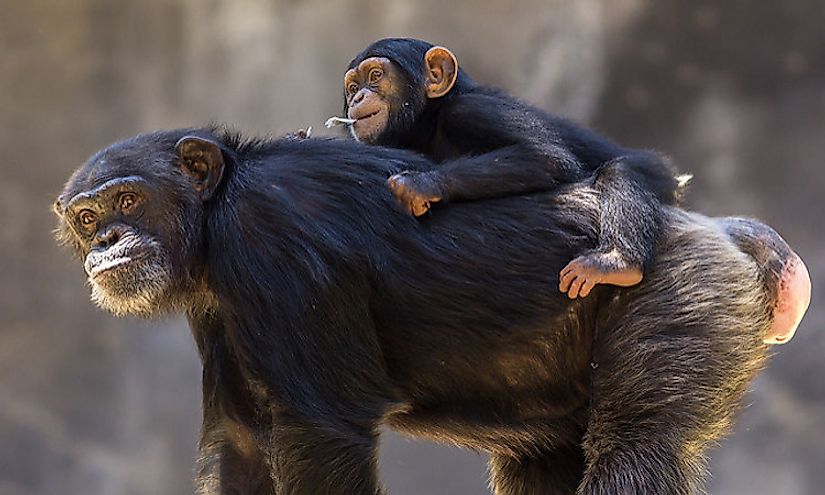

Researchers observed “severe fits of coughing and sneezing” in the chimpanzees prior to the incident and decided to investigate. In 2013, five chimps in a community of 56 in Kibale National Park, Uganda, died with little explanation. Lethal outbreak Among Wild Chimpanzees in Uganda Caused by Human “cold” Virus The findings give proper direction which could provide answers when it comes to the nutritional value of various organs, as well as inquiries around the overall benefit and/or necessity of meat eating in primates.

The scientists suggest this has to do with physiological barriers: infant skulls are less developed and thus easier to break, while adult skulls introduce a challenge and their torsos contain a “fat-rich liver.” The chimpanzees generally consumed the heads of infants first, 91% were consumed this way, while adult monkeys were generally consumed torso first. Researchers filmed 29 arboreal monkeys as they were consumed by chimpanzees at Gombe National Park, Tanzania, and recorded the order in which areas of the monkeys were consumed. Now, researchers want to better understand the meat eating compulsion in chimpanzees, as they are still predominantly herbivores. Since her initial observations, researchers have witnessed chimpanzees hunting and eating a variety of vertebrates, and in very rare cases, demonstrating cannibalism.

Previously thought to be herbivores (eating only plants), Jane rewrote our understanding of chimpanzee diets observing them as omnivores (eating both plants and animal protein). Goodall, which established an entirely different lens through which we see our closest living relatives, is evidence of meat eating and hunting in chimpanzees. Meat Eating as Observed in Wild Chimpanzees Yet, the question remains: As a female chimpanzee, would you stay or would you go now? Overall results from the study demonstrate how similar we are to chimpanzees in general, particularly with long development from child to adult. Additionally, there is a tough integration period for those who forge their own path with a novel social community. There are several reasons for this, including that chimpanzee who remain receive ongoing support (which also means more access to food if their own mothers are high ranking). This research demonstrated that for a young female chimpanzee looking to find her own way with a new group, her first pregnancy won’t happen until around the age of 16, whereas those who stay at home are moms at around age 13. In these groups, females can either remain with the group they’re born into, or head out on their own, likely to reduce incidences of inbreeding. This analysis enabled researchers to see across time and uncover trends, which allowed them to find one surprising pattern in particular: female chimps who depart from their birth family delay pregnancy and developing families of their own.Ĭhimpanzees live in groups with a structured hierarchy. Recently, researchers at Duke University, as a part of the Jane Goodall Institute Research Center, analyzed over 50 years’ worth of daily records for 36 female chimps born in Gombe National Park, through the robust database which goes all the way back to Jane’s findings penned in her famous notebook. There’s plenty to discover – are you curious?Ĭhimp Females Who Leave Home Postpone Parenthood The following studies showcase the extraordinary chimpanzee research which continues to this day. Insights from Gombe help us to better understand ourselves, what is ancient versus what is unique in primates, as well as to reveal our similarities with the rest of animalkind. Since 1960, research in Gombe, Tanzania has been evolving and growing, much like our two chimpanzee and human lineages from their early shared branch. 60 years ago, our previous understanding of our relationship to the rest of the animal kingdom was forever redefined by the one and only Dr. Genetically, chimpanzees and humans share 98.6% of our DNA, and our behaviors are more than a little alike as well.


 0 kommentar(er)
0 kommentar(er)
